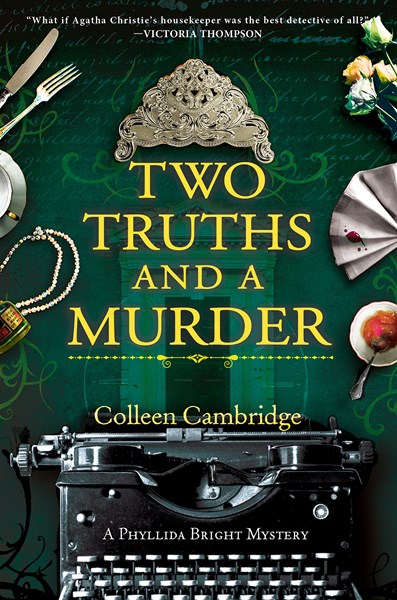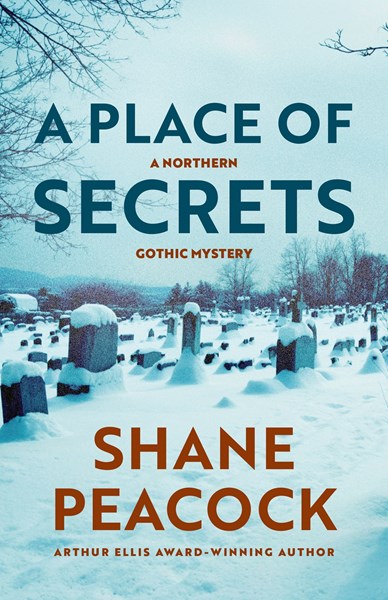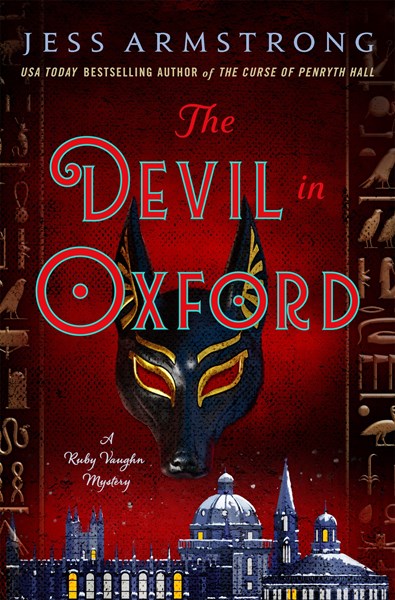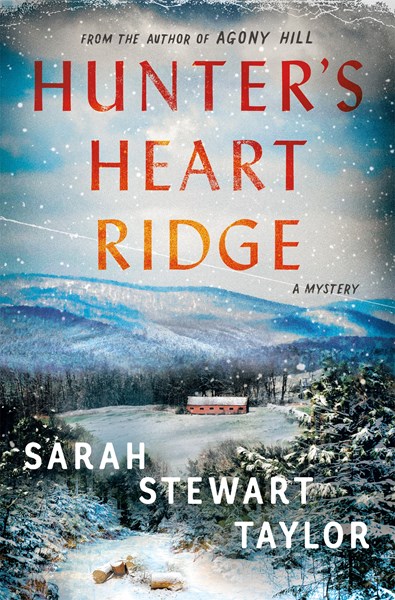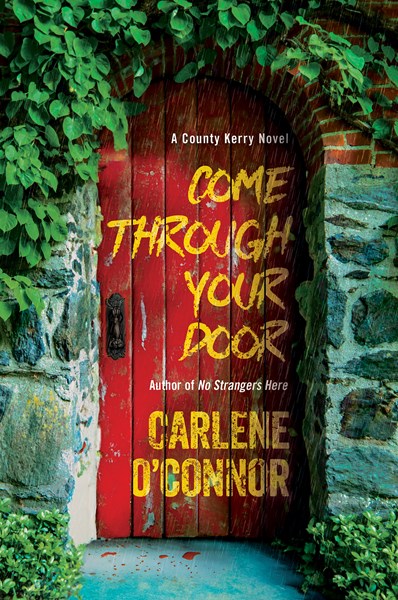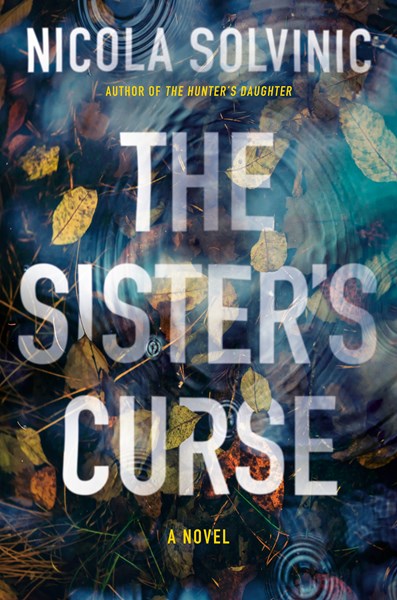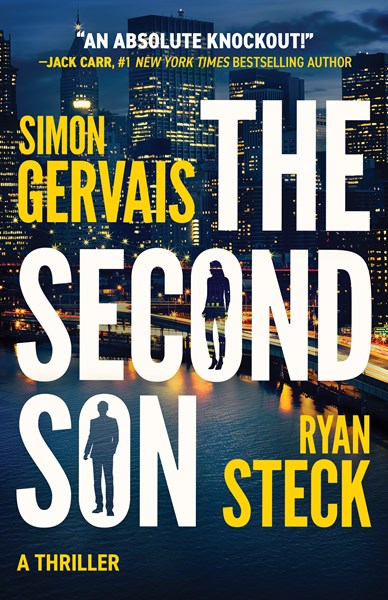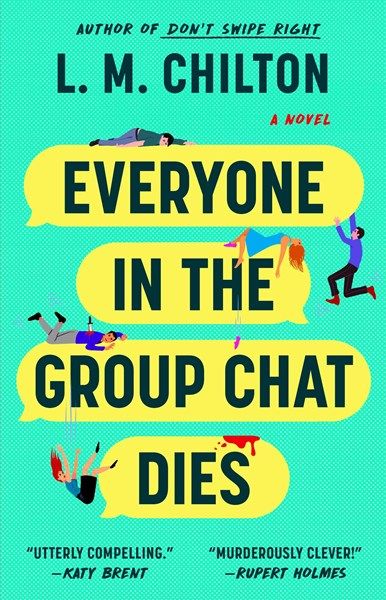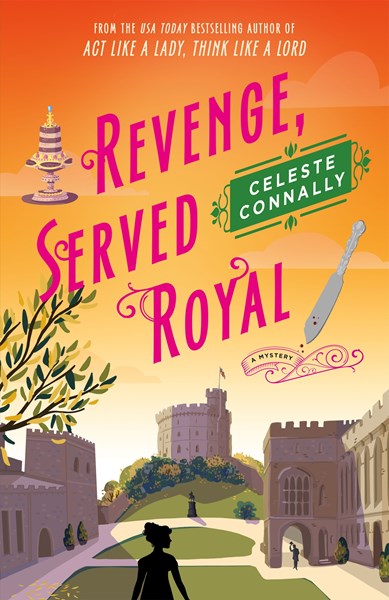Phyllida Bright, Agatha Christie’s long-standing housekeeper, close friend, and—with Agatha’s permission—sometime sleuth takes on a local case involving multiple murders. Invited to a dinner party, she’s been asked to help determine whether one of the husbands is guilty of infidelity (he isn’t), but instead observes as the obnoxious Genevra Blastwick, the complete opposite of her shy sister Ethel, forces everyone into playing Two Truths and a Lie, and she herself is quick to claim as one of her truths that she once witnessed a murder. Fact or fiction? In either case, her claim garners her plenty of attention—these days, Genevra would be an influencer of some sort—but it’s not necessarily the attention she wants, as the next morning, reclusive Ethel is discovered to have been run over by an automobile while walking home from the party. Has the murderer killed the wrong sister, “offing” sweet Ethel when they meant to murder big-mouthed Genevra? Set entirely in the countryside, with the supportive Agatha in the background, this novel sees Phyllida taking on an even greater role as an amateur sleuth, with many in the community, especially the service workers, turning to her for help. Add to all this a burgeoning romance that will knock Phyllida and many readers off of their feet, and you have all the makings of one of the best cozies of the year.
Mystery & Detective
In a quiet Ontario town, days after Christmas, Evelyn Massey, over 90 years old, is found dead in her home with a note guiding Alice, a local policewoman, to a dead body buried in the basement for more than 60 years. More bodies are found, all from the same time period, with evidence suggesting Evelyn’s long dead husband as the guilty party. He is considered saintly by his daughters and granddaughter and the family friends still living, most of whom are also in their 90s, making this no easy case to investigate. Assisting Alice’s able and interesting team is Hugh Mercer, late of the NYPD, in the area doing a sort of personal penance for his career. The local chief goes so far as to suggest letting the mystery of the dead bodies slide since it all happened long ago and everyone is so old, but the serial killer emerges in a dramatic fashion, bringing all the motives to the open, including Alice’s private demons. The weather and landscape play an integral part in this somewhat bleak story that’s best read on a sunny day.
Christmas in Oxford sounds like a good idea. But as might be predicted by anyone acquainted with Ruby and her housemate and employer, Mr. Owens, that is likely a false assumption. While antiquarian books are their business, the Oxford sojourn highlights Egyptian artifacts and brings Ruby back to the harsh memories of her WWI service as an ambulance driver. Her feelings for Ruan, healer and witch, must be confronted, as must her trust in old and dear friends, including Leona, her partner in ambulance duties. Circumstances require much late-night skulking involving lockpicks and a reluctant Ruan as a partner, as well as attendance (unwilling) at overblown parties.In the end, the heroes are found and the evildoers are truly evil, but as with many books in this series, reading is easier if one starts at volume one. Smuggling, murder, and cocaine are mixed within a roiling undercurrent of social and political tension in an atmosphere of scholarship. A nicely drawn period piece.
This fun-loving mystery/romcom features Juliette Winters, author, editor, and likely workaholic. The book opens with Juliette hobnobbing with the Seattle elite on a posh yacht, working the crowd in anticipation of an announcement from business titan Warren Ellingham. It seems that Warren has a) decided to publish his memoirs and b) promised Juliette exclusive rights to the book, the most exciting, salacious tell-all that Seattle has seen in years, if not decades. Except things don’t always make it to the podium as smoothly as one might like. Before he can get a few words out, Warren keels over—likely from a heart attack—and the manuscript disappears, with Juliette left holding an empty bag. It’s easy to feel sorry for Juliette, but the arrival of Charlie Hawkins, MD on the scene, does a lot to cheer things up, and the woman who asserts not to have time for romance may well have to re-examine that claim, while still looking for Warren’s manuscript. Sure to delight fans of lighter mysteries from L. M. Chilton, Mia P. Manansala, and Elle Cosimano.
Stewart brings us back to a time of tumult: mid-1960s rural Vermont. In this sequel to Agony Hill, we are reintroduced to Detective Frank Warren, a good guy whose efforts at law enforcement—assisted by Trooper “Pinky” Goodrichsend—see the two of them traipsing up and down the county at all hours. This book opens as one of the visitors to the Ridge Club, a hunting and fishing lodge exclusively for rich and distinguished men, is found dead, on the same day that deer season opens. A mere coincidence, right? But Frank suspects that there may be more than someone accidentally shooting themselves while cleaning their rifle. So he and Pinky launch an investigation that tangles them up in the Ridge Club members when a violent snowstorm comes along to isolate them even further. This closed-circle narrative is wonderfully well-done, deeply satisfying, and a compelling portrait of a community undergoing change. Readers who enjoy these books will also appreciate Julia Spencer-Fleming, William Kent Krueger, and Ausma Zehanat Khan.
Twists within deceptions are at the heart of O’Connor’s story of insanity, confusion, and murder. Some readers, in fact, may need to take notes to keep straight the murder of Annabelle a year ago from what is happening in the present day. Veterinarian Dimpna Wilde is once again at the center of events that involve her assistant, Niamh, with a dead body found in her apartment. Cormac, Dimpna’s love interest, is investigating and is tricked by a fake crime-scene photographer who cleans the scene of evidence and disappears, just one of the outlandish events that occurs. The confusion about who is who and what is what is eventually explained, but hardly makes the situation clearer. There is even a bizarre Irish pun of a name that somehow brings the murderer into focus. This series, while offering much in the way of Irish local color, is far from cozy, and offers a lot of satisfaction for readers willing to untangle all the complicated knots.
In Solvinic’s debut, The Hunter’s Daughter, readers met Detective Anna Koray, daughter of a forest-god worshipping serial killer, who was in therapy to bring back childhood memories (this latest book can stand alone, but it’s worth going back to the first to get to know Anna better). She’s still an expert at her father’s curriculum—wilderness tracking—a skill that comes into play when there is new upheaval in the area, starting with the near-drowning of a boy who’s rescued by Anna. She suspects that the almost-tragic event may not have been an accident, and the investigation brings in the long-cold crime of a local woman who disappeared 25 years before and wrongdoings of the town’s rich thugs, all tinged with supernatural elements. In the meantime, Anna’s continuing her relationship with a young, devoted ER doctor who has problems of his own. Anna is a complex character with a well-hidden dark side that, combined with her steadfast kindness and smarts, will keep readers rooting for her to come out on top. For fans of wilderness thrillers and all who enjoy a thrilling police procedural.
Chase Burke works as a sommelier for a restaurant in New York’s Chrysler Building and has put his military life behind him. He’s about to ask out a pretty government official, Tanya, who is visiting him on the job, when armed men attack, and she seems to be their target. Chase kills some of the men, but Tanya is hurt. Detective James Campbell and his partner, Detective Alice Doyle, are assigned the case and are told to work closely with Federal authorities. They soon determine that Chase has a lot of skeletons in his closet, and he immediately becomes the prime suspect. Chase realizes he must uncover the truth if he’s not going to rot in jail for the rest of his life, but digging for answers puts him in the crosshairs of a secret group of killers that thinks he knows too much. Whom can he trust while his face is plastered all over every news channel? From the opening page to the last, this book is a relentless force of non-stop action and thrills. Gervais and Steck write great books and have crafted a stellar story together. Comparisons to Mark Greaney and Jack Carr are warranted, but this first in a series might be even better. The next one cannot come fast enough.
This is one of those binary books. As darkly funny as it’s poignant and moving. Light and cozy, except when it’s suspenseful and horrifying. In short, there’s a whole lot going on, yet Chilton, author of the delightful Swiped, succeeds in keeping it all afloat. Kirby Cornell, a failed Nepo Baby, lives in the bleak town of Crowhust in an even bleaker apartment with a gaggle of roommates. It takes a desperate message to their old group chat to get Kirby and her chums to put down the beer. But the message isn’t what’s so scary. It’s that the message comes from Esme, an ex-roommate who died a year ago. Creepy, no? The novel moves between a year ago and the present day, with plenty of Crowhurst, including the local “fayre,” in between. Because it turns out that Crowhurst was the killing ground of a terrifying serial killer who was active in the 1980s, may have never been fully identified, and who provides Kirby and chums with plenty of speculation. A fast-moving, clever thriller that uses social media to keep the narrative thriving. Teens and twenty-somethings should love this.
I confess, I don’t know where to start this review, there’s so much to the novel that will draw in readers. Should I mention that Regency era-set novels are usually romances, so a mystery that unfolds in the era is a particular treat? Or maybe that the main character, Lady Petra—in her third series outing here—wears lock picks and a dagger beneath her gowns? (Feisty!) How about the baking competition that will attract lovers of The Great British Bake Off and cozies featuring baking? Well, I’m still no closer to an answer, but I will say that readers should pick this up and be ready for delicious treachery, lies, and scandal when everyone who’s anyone in Regency Britain descends on Windsor Castle. They’re excited for a week of diversion that includes a competition to decide the best cook in any aristocratic house in the kingdom. Lady Petra’s stint as a judge is interrupted by the murder of one of the other judges and the sleuthing is on. Try Connally’s previous works in the series (All’s Fair in Love and Treachery; Act Like a Lady, Think Like a Lord) while waiting for this one.

